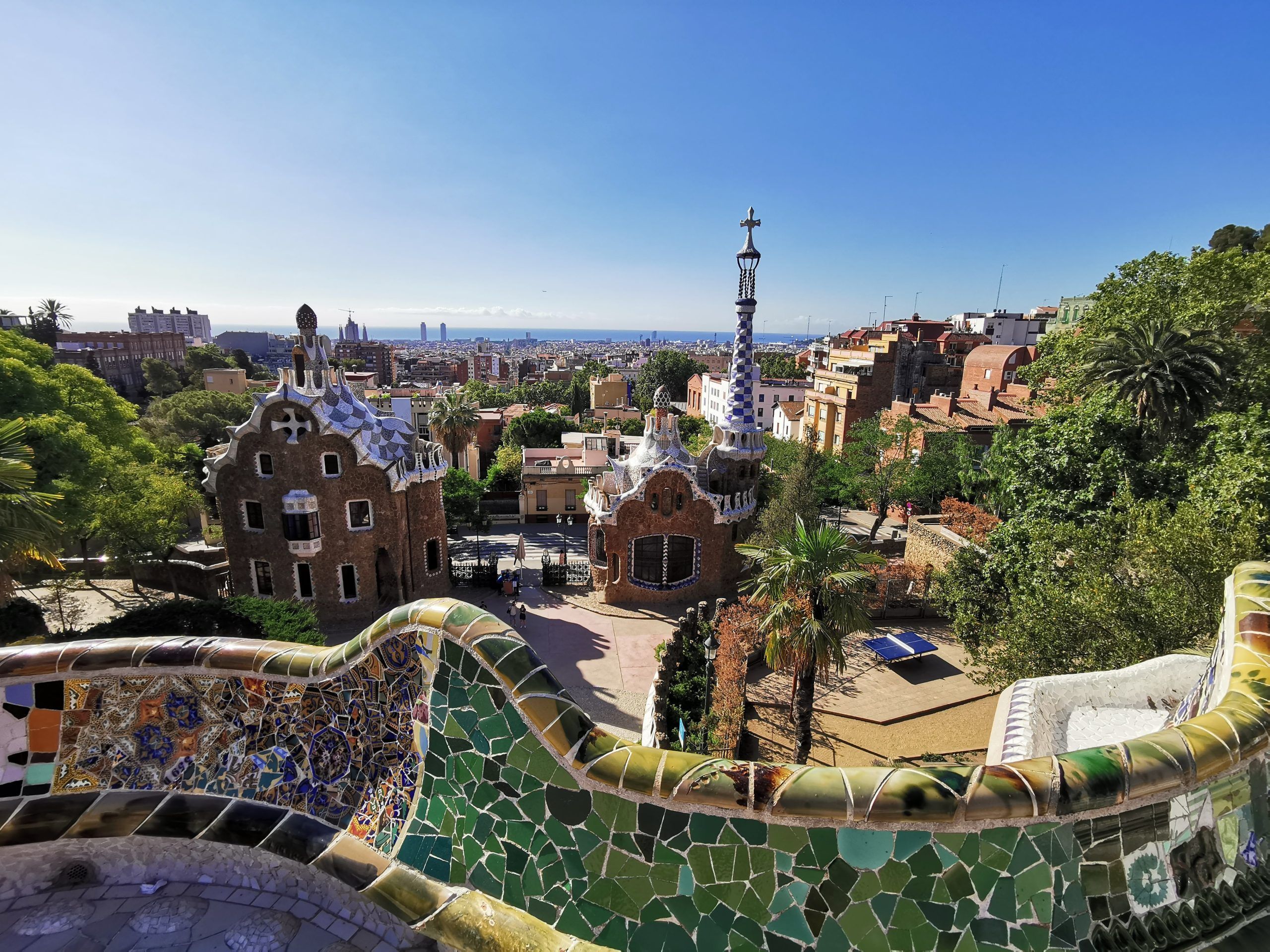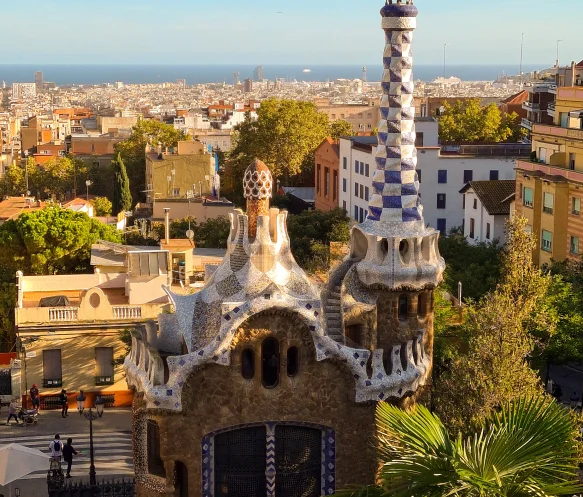Park Güell History | All About The History Of Park Güell Development

Park Güell is a park complex that is rich in a variety of unique natural and architectural elements, standing majestically against the sky on Carmel Hill, Barcelona. Park Güell is the most unique park in Spain. This park is full of artistic buildings by the famous Spanish art maestro and architect, Antoni Gaudí. Tourists can enjoy the uniqueness of his building. Park Güell was originally a private housing project which was the idea of Eusebi Güell who appointed Antoni Gaudi to run this project and turned a simple idea into colorful naturalistic and modernist designs.
Park Güell is undoubtedly one of the most popular attractions of Barcelona. Its development journey has also been the talk of the town. Discover how Gaud’s initial vision transformed to become the modern public park, that UNESCO designated as a World Heritage Site in 1984.
After living in England, Eusebi Guell i Bacigalupi (a wealthy industrial entrepreneur) returned to his hometown of Barcelona intending to create a garden city, a concept he had heard about abroad. And the place chosen was a rocky hill in the district of Gracia, at the time called Muntanya Pelada (ie, Bare Mountain). Initially, the idea of developing Park Güell was intended for exclusive housing for aristocrats, with plans to build 60 units of luxury villas that have a perfect view because of their high location on a hill. This project was initiated by the billionaire Eusebi Guell (1846-1918) and to implement this urbanization, Eusebi Guell hired Antoni Gaudí, who in turn called on his fellow architects Josep Maria Jujol, Joan Rubió, and Francesc Berenguer to collaborate on the project.
Eusebi Guell believed that the best way to experience Barcelona is to see it from the top of the Gracia district, which is north of the city center. Guell was very confident that the location he has chosen, is unbeatable! Even though it was far from factory pollution, it was protected from city noise, stunning panoramas reach far into the Mediterranean Sea, and the sun’s intake is not blocked by anything.
Eusebi Guell and Gaudi’s acquaintance began in 1886 when Eusebi Guell entrusted Gaudi to design his new house to be built in the La Rambla area. From a professional work relationship, it gradually grew into a strong friendship and mutual admiration. So, Park Güell is the masterpiece of the biggest and most popular collaboration between two friends, Eusebi Guell and Antoni Gaudi.
With the support of Gaudi’s three talented fellow architects, he worked closely with them on the project. In October 1900, the area was leveled in preparation for the building of Park Güell. The two pavilions at the entry, the principal staircase, the waiting area, the outer gate, the viaducts, a portion of the esplanade, and the drainage system were all finished by 1903. Gaudi devised various systems to prevent soil erosion to cope with heavy downpours, while at the same time, storing water for daily needs.
Where in this period, architects tend to focus on the perfection of style through organic and natural elements. Many experts try to connect Park Güell with various symbols because of the complex iconography expressed by Gaudi as a devout Christian, which provides a slick presentation of religious symbols, mythology, history, and philosophy. Many of the symbols found in Park Güell are thought to be closely related to politics and religion, with a touch of enigmatic mystery that remains unsolved to this day.
The development of an area of more than 17 hectares took up to fourteen years, from 1900-1914. Unfortunately, this project failed in the market, of the 60 villas that were planned to be built, only 2 units were sold and realized. Gaudí occupied one of them.
The first person to buy a residence in this elite area was a close friend of Guell’s, Martí Trias i Domènech, in 1902. He commissioned Juli Batllevell to build his villa.
This elite housing development failed because it was considered to be located too far from the city center, the location has a rugged soil structure due to rocky hills, difficulty getting water intake for daily needs, and is vulnerable to the danger of landslides.
The garden was eventually made private by Guell, but he allowed the public to use it for cultural events and social activities. After Eusebi Guell died in 1918, his heirs determined to sell this splendid property to the City Council on May 26, 1922. The government’s takeover of this masterpiece was a resounding success. More than 3 million tourists every year, flock to this park. The luxurious residence of the Guell extended family has also changed its function to become a state school called Baldiri Reixac.
Meanwhile, the house where Gaudi lived in his old age is open to the public as the Gaudí House Museum in 1963. The museum displays a collection of furniture used by Gaudi during his lifetime.
In 1969, Park Guell was named a National Monument of Historical and Artistic Character. In 1984 UNESCO declared Park Guell to be one of the world heritage sites that must be preserved because of its contribution to the development of architectural and building techniques in the late 19th and early 20th centuries.
To experience the beauty of this architectural gem and the effort that Anton Gaudí put into her construction, enjoy a tour of Sagrada Família with an audio guide. From the moment that you turn your audio guide on, you will be introduced to a wealth of historical knowledge and information regarding the current construction projects that are taking place.



